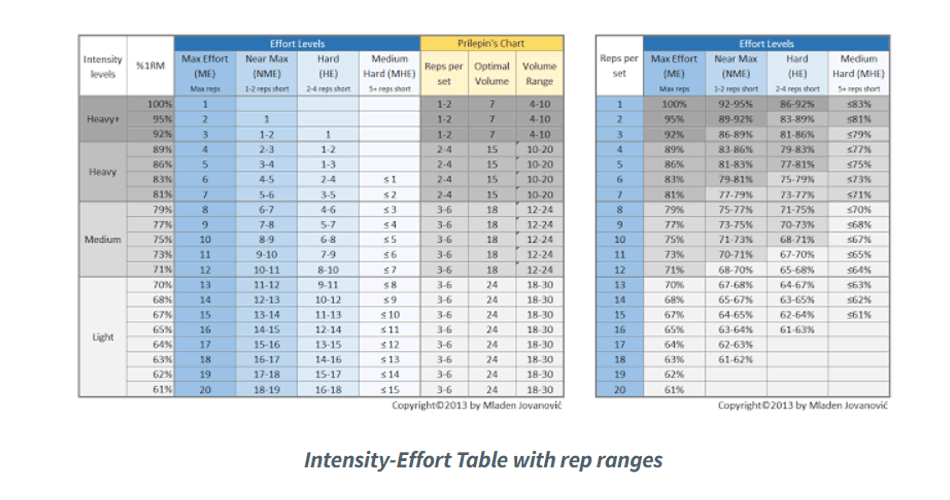Strength Training Planning the Training Block – Part 4
The following article is going to be part of my upcoming book. This is a sequel to my previous articles Part 1 | Part 2 | Part 3.
Now that you are finished with a strength training phase, you may find asking yourself – now what?
In the following text, learn what to do between the two training phases, by using “Rinse and Repeat” ideas, such as using open sets and adjusting 1RM, among other methods covered in this article.
Rinse and Repeat
Rinse and Repeat is the last element of (1) Establishing 1RM, (2) Planning the training phase and (3) Rinse and Repeat cycles of strength planning. Rinse and Repeat represents updating 1RM and following up with a new phase. There are few options in updating 1RM:
- Retesting 1RM
- Plus sets
- Adjusting 1RM
- Adjusting percentages in the next phase
Retesting 1RM
At the end of the training phase, we could plan for re-test of 1RM, either by using the true 1RM test or reps-to failure. Then we can use this new 1RM for planning the next phase of training. Unfortunately, this is not the best idea.
In 2015, I did a bench press specialization program, by Greg Nuckols, that utilized bench pressing three times a week. I have based this program of 90% of my 1RM in the bench press estimation, just to make sure I start easy and conservatively. Everything went well with the program – I got stronger and managed to do all of the prescribed sets and reps without any problem. At the end of the program (4 weeks) I re-tested my 1RM, and it was 20kg bigger than the 1RM I used to base off the training program. I decided to repeat the same program, but this time I used the new 20kg bigger bench press 1RM. I started struggling with the workload, and eventually ended up with a small injury in the shoulder.
The moral of the story is that “just because you can, doesn’t mean you should”. I should have been smarter and used adjusted 1RM, rather than the new 1RM, that resulted in training loads jumping too much and creating over-use of the shoulder. Slowly cooking.
But does this mean that you should not test 1RM after the end of the phase? No, it doesn’t – you can test the new 1RM to check if the things are going well, but you should think twice before using that to base off your next phase, especially if it represents a big jump from the previous 1RM estimation (e.g. bigger than 10-20%).
Plus sets
Instead of using true 1RM test, you can use plus sets. For example, in the last week, the training program might call for 3×3 @90%. You can do two sets as prescribed, and finish the last set with AMRAP (as many reps as possible). Using Epley’s formula, you can establish new 1RM.
Similar to the true 1RM test, you should think twice before using the newly established 1RM for the next phase of training. The role of such a test is to check if the program is working and if you can really demonstrate the 1RM (the one that you might have predicted during the phase itself using reps and RIR 1RM estimation, or velocity estimation of 1RM).
Even in the case of “1RM estimation through iteration”, where we use 1RM, educated guess to start the MVP phase for a new lifter, we might be cautious to increase the 1RM for the next phase too much. “Just because you can, doesn’t mean you should”.
Here is the example of “1RM estimation through iteration”:
- New athlete that is just starting to lift. Bodyweight 75kg.
- I decided that his squat 1RM for the MVP is 70kg.
- We start easy and prescribe squatting two times a week, starting with 3×5 @75% and increasing for 5% every week (3×5 @75%, 3×5 @80% and 3×5+ @85%).
- In the last week and for the last set, we perform the Plus set (capped at 10 reps). The athlete performs 10 reps without problem and can probably finishe 15.
- The new estimated 1RM is (10 x 60 x 0.0333) + 60 = 80kg. It is probably more than that, since he could probably bang the extra 5 reps.
- Rather than increasing to 80kg, or more, we increase the next phase 1RM for 5kg, making it 75kg for the next phase.
- In this case the Plus set is used just to gauge the process and use that for some evidence to increase the 1RM for the next phase.
Plus sets can be very motivating and they can be used thorough the cycle to judge the training progress. Just make sure not to overdo them.
Adjusting 1RM
As can be seen from the examples above, adjusting 1RM is my poison of choice. There are two ways to do it. The first one is using absolute increment (e.g. 5kg for the lower body, or 2.5kg for the upper body). The second option is using % increment (e.g. 5% increase). In the figure below, you will notice how they differ for three lifters with different 1RMs:

Figure 60. Absolute and Relative 1RM Adjustment
As can be seen, relative approach is biased against lifters with higher 1RM, since more they can lift, more they should increase. But, as we know from real life, it is actually the opposite that happens. It gets harder and harder to increase 1RM as you get stronger and stronger. For this reason, I prefer the absolute approach. Take a look at the following figure that calculates % change using the absolute approach:











Responses